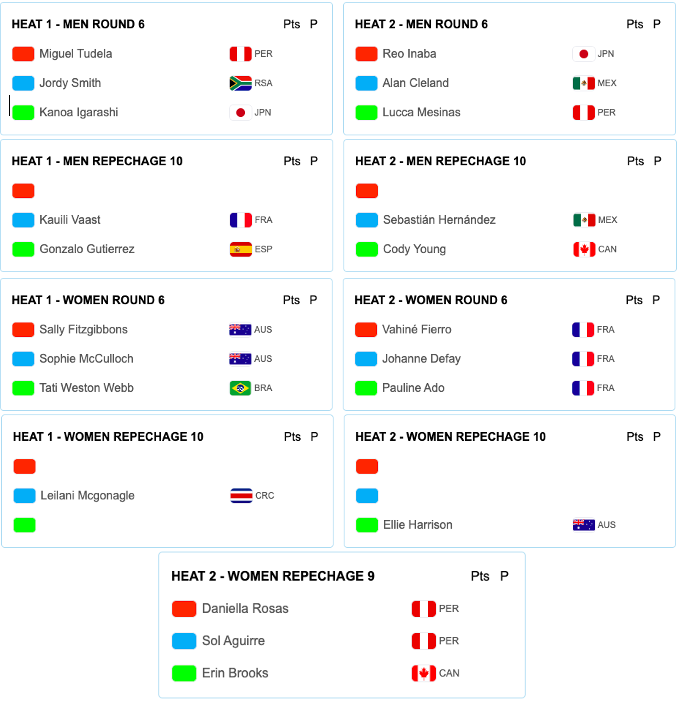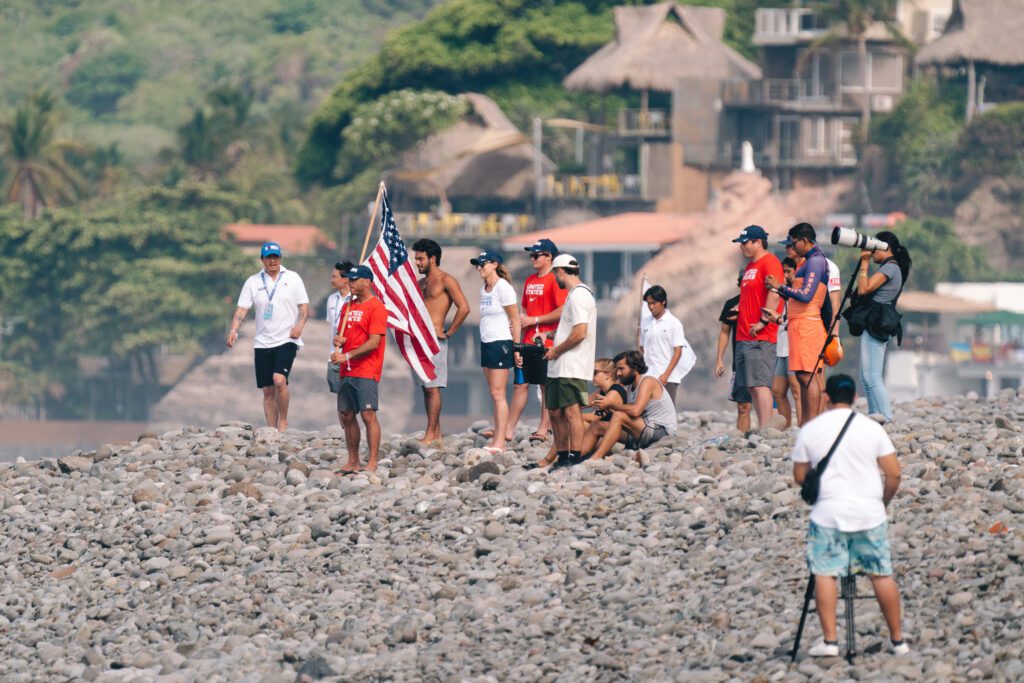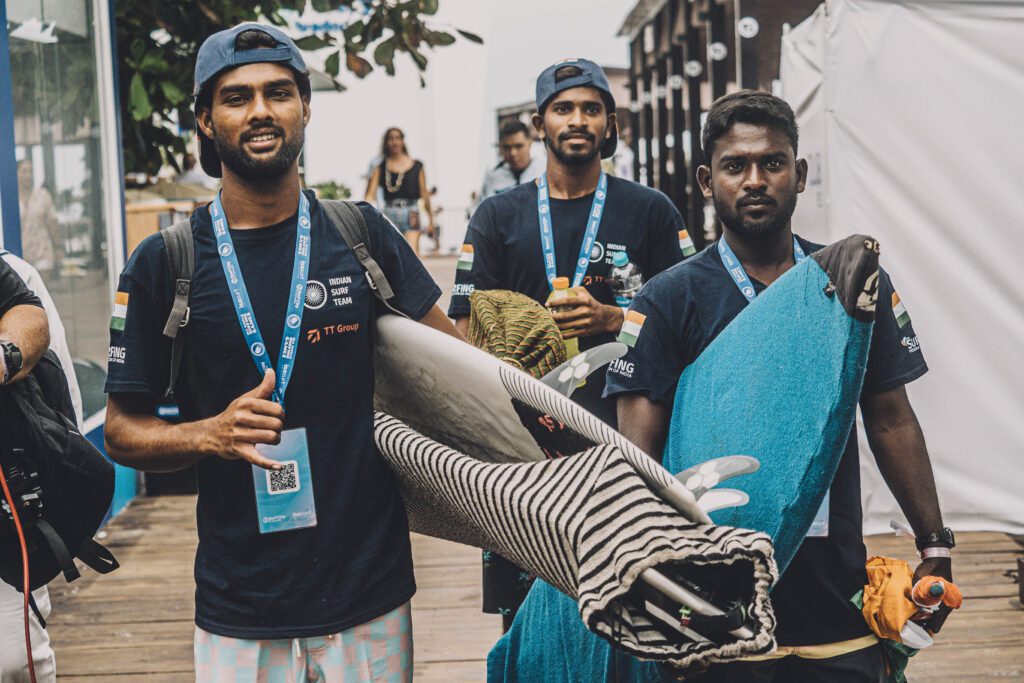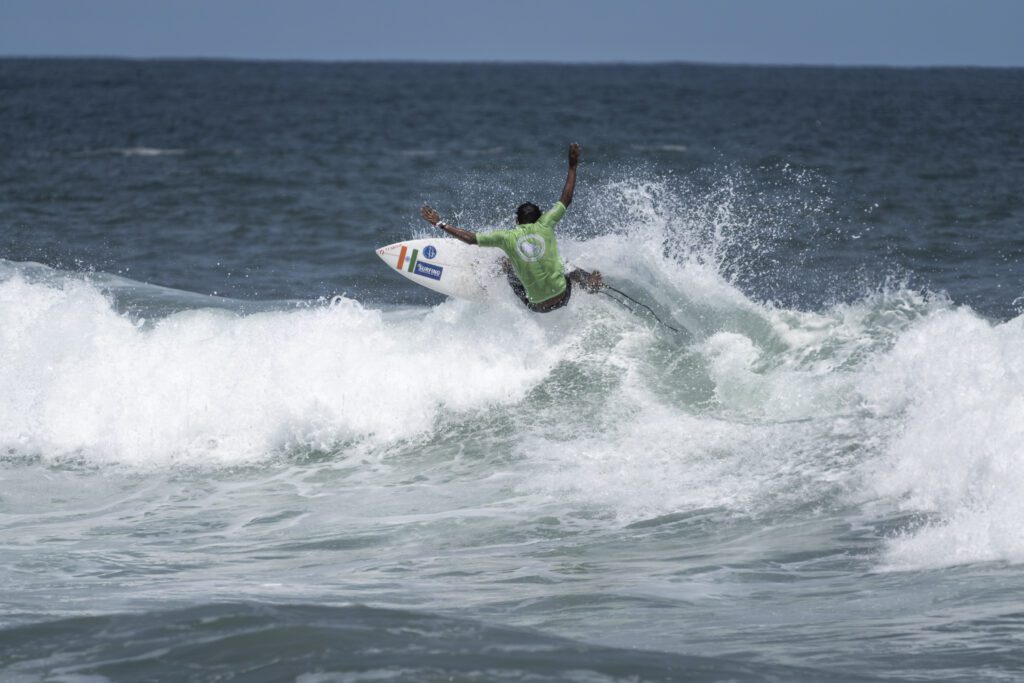5 Surfers Qualify For Olympics And 14 CTers Are Out Of The ISA World Games
Plus an interview with Team India on their first time competing.
This morning marks Day 7 of the ISA World Games in Surf City, El Salvador.
With the post-Surf Ranch judging-gate conjecture thick in our collective surfing psyche, and a choking madness in many an Instagram comment section, this year’s ISA World Games is a happy reprieve.
Today, we will see Men’s and Women’s Main Rounds Five and Six and Repechage Rounds Eight, Nine, and Ten. You can watch live above.
If the multitude of main rounds and repechage rounds in the ISA World Games is confusing, you are not alone. In the words of John John Florence, “It’s my first ISA and it’s hard to wrap my head around all the heats and the format…”

Format Reminder
First off — if you lose two heats, you’re eliminated from competition. That’s the simplest way to put this.
There are seven main rounds of competition before the final. Each round consists of four-surfer heats — top two advancing. Those who score first and second in the main rounds go straight to the final. If you place third or fourth in any of these main rounds, you are forced to battle through repechage rounds. You must take first or second in every one of your repechage heats or else you are eliminated.
The two surfers who place first and second in the final repechage round join the two winners of the main rounds in the final. The final will then be a four-surfer heat.
If you missed our 2023 ISA World Games Preview that goes over El Salvador, Olympic qualification, new countries competing, and all that jazz, here’s the link.
If you missed our update on the first three days of competition, here’s that link.
Who’s in?
Only six CT surfers are still in the contest — the underdog upsets have continued. Here’s who’s still in the competition:

On the men’s side: Gabriel Medina has been on a characteristic rampage with a focus on one-air, high-scoring waves. Airing his grievances in the water, maybe. However, this morning he withdrew from competition (more on this below). Team Mexico’s Sebastian Williams Hernández scored a 9 for an on-brand silky air reverse (click on the video below please) and Costa Rica’s Carlos Muñoz scored an 8.17 for a double-grab straightie that he said was inspired by the Irons brothers.
On the women’s side: Australia’s Ellie Harrison posted one of the highest wave scores in the contest — a 9.50 for solid, critical combination of turns. 15-year-old Ladybird Erin Brooks has also consistently posted high scores for Team Canada including an 8.77 on her backhand. Team Canada’s Mathea Olin snagged an 8.90 and Leilani McGonagle procured an 8.60 for Team Costa Rica.
Who’s out?
The names that aren’t on that heat sheet above speak just as loud as the names that are.
For one, you won’t see any U.S. names. John John lost yesterday in a repechage round against Italy’s Edoardo Papa, and Spain’s Gonzalo Gutierrez — a result of marginal waves and poor luck. Tyler Gunter lost today in a repechage round and Griffin withdrew from his repechage round. On the women’s side, Brianna Cope lost out in a repechage round, while Carissa Moore and Caroline Marks both withdrew from their repechage heats.
This morning, both Gabriel Medina and João Chianca withdrew from competition. Tatiana Weston-Webb is still slated to compete in her heat. But today we’ll see if she withdraws as well. We heard from someone close to Team Brazil (who shan’t be named) that they were planning on withdrawing if things weren’t going well.
We don’t know exactly why these athletes are withdrawing — none of them have answered our requests for comment. What we do know is that this competition only decides Olympic qualification for the Africa, Asia, Europe and Oceania continents. So, teams from the “Americas” could be disinclined to grind out heats and instead bail early.

On that heat sheet, you will also not see other CT surfers like Filipe Toledo, Rio Waida, Ryan Callinan, Ethan Ewing, Liam O’Brien, Matthew McGillivray, Ramzi Boukhaim (who isn’t quite looking 100% after injury), and Leonardo Fioravanti.
Filipe, who looked strong for most of the contest, ended up losing to Indonesia’s Ketu Agus, France’s Kauili Vaast, and his own countryman João Chianca. The reason for the loss is similar to John John’s — very few contestable set waves and tricky sections. Lots of room for luck, very little room for error.
The cool side of this is that less endemic surfing countries like Germany, Israel, Canada, and the Netherlands are still in contention — which is interesting. For the cynics, the fact that developing surf nations are getting better just means more heads in the water. For the romantics, it means that more and more humans have access to an activity that has benefited our own lives. For the realists, it means both of these things and more consumers in the surf industry — which is good for the surf brands you love.

Who’s qualified for the 2024 Paris Olympics already?
Based on the ISA’s crunched numbers there are a number of surfers who have already qualified for the Olympics:
For South Africa, Jordy Smith and Sarah Baum have qualified.
For New Zealand, Billy Stairmand and Saffi Vette have qualified. Saffi said, “I’m kind of terrified of Teahupo’o but I’ll give it a red hot crack.”
And for Japan, Shino Matsuda has qualified.
All three of these countries surfed in the 2020 Tokyo Olympics.
There are still, however, more Olympic spots up for grabs at this contest.
A chat with Team India’s coach
One of the new nations competing at this year’s 2023 ISA World Surfing Games is India. We’ve known there were world-class waves in India — Dave Rastovich showed us the way.
But, there hasn’t been nearly as much fanfare about surfers from India. And it’s special to see an emerging surf nation take the steps to compete on the world stage.
I talked to the Indian surfers and they referred me to their coach, Patrick Renaud, for an interview. An ex-professional surfer from South Africa who has worked with the ISA for many years, Patrick was recently asked to come to India and Sri Lanka and teach surfing and water safety courses. From there, it was a natural progression to become coach of the fledgling India national team.
There are currently three male surfers competing but no women (yet).
“I’m so proud of these guys,” Patrick said, “they pretty much all come from poor fishing communities where they worked as fishermen. Many of them only picked up surfing a few years ago. But they worked so hard for this. The work ethic has been inspiring. Now they are just soaking this all in.”

I asked Patrick about the challenges that face surfers in India. “For a long time there wasn’t the infrastructure. But now there is. India considers surfing a sport and now the government and Olympic Committee are on board,” he said.
“India is also going to have its first WSL QS event ever in August which is huge for our surfers — men and women,” Patrick told me. “There are incredible waves here, like Snapper Rocks good, with very few people out. And now with hotels and resorts for people to stay at, I think that surf tourism could be very good for the community.”
Unfortunately, Team India lost out early (they surfed against the likes of Sebastian Williams, Alan Cleland, and Ramzi Boukhaim). But they will be competing in the Asian Surfing Games that will take place in the Maldives later this year.
There’s your dose of fresh air that competitive surfing still offers. A chance for an activity as childish as wave-riding to take a couple of kids from India around the world.















Comments
Comments are a Stab Premium feature. Gotta join to talk shop.
Already a member? Sign In
Want to join? Sign Up